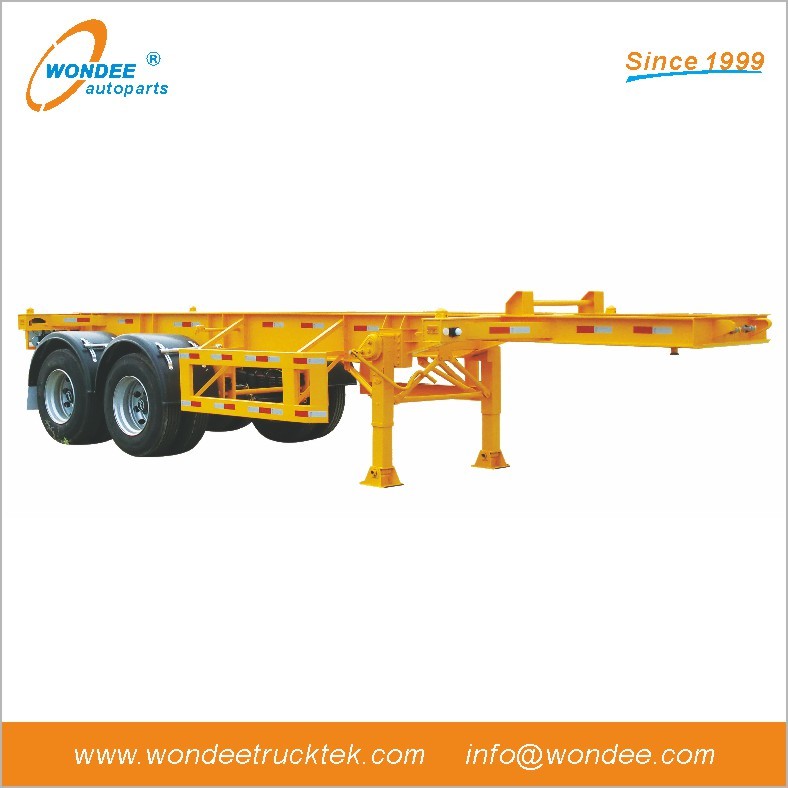10
2025
-
07
Maximizing Fuel Economy for Semi-Trucks: Practical Strategies for Fleet Efficiency
Source:
Discover expert strategies to enhance semi-truck fuel efficiency through mechanical maintenance, aerodynamic improvements, and smart driving techniques. Learn how fleet management technology and proper trailer selection can reduce fuel costs.
Fuel expenses typically represent one of the largest operational costs for logistics businesses, often exceeding 30% of total expenditures. Consequently, enhancing the fuel economy of semi-trucks is a crucial step toward maintaining profitability in fleet management.
Understanding the key mechanical and driving behaviors that impact fuel consumption enables operators and drivers to implement effective measures for improvement.
Optimizing Mechanical Performance to Cut Fuel Usage
Poorly maintained truck components can significantly increase fuel consumption. Fleet operators and drivers should prioritize the following areas to ensure mechanical efficiency:
Routine Vehicle Servicing
Regular inspection and servicing of trucks ensure that all systems function optimally. Timely detection and repair of issues like fuel leaks, clogged air filters, and brake drag prevent unnecessary fuel waste and maintain engine performance.
Tire Care and Pressure Management
Selecting the correct tires and maintaining proper air pressure are vital. Under-inflated tires raise rolling resistance, which directly translates to higher fuel usage. Monitoring tire condition regularly helps maintain fuel-efficient driving.
Adhering to Recommended Fuel and Oil Standards
Using manufacturer-specified fuel grades and lubricants is essential to keep the engine running smoothly. Scheduled oil changes reduce frictional losses inside the engine, supporting efficient fuel consumption.
Axle Alignment and Configuration
Incorrect wheel alignment increases resistance and fuel demand. Ensuring the axles are properly aligned and selecting the appropriate axle ratio according to load and terrain can optimize engine revolutions and fuel use.
Improving Truck Aerodynamics
Aerodynamic drag accounts for a substantial portion of fuel consumption at highway speeds. Modifications such as aerodynamic cab designs, installation of roof spoilers, side skirts, and fender flares can significantly lower wind resistance. Removing excess external fixtures like bull bars and unnecessary lights also reduces drag and weight, promoting better fuel economy.
Driving Practices That Enhance Fuel Efficiency
Operational habits are just as influential as mechanical conditions in reducing fuel consumption:
Utilize Cruise Control Consistently
Cruise control helps maintain a steady speed, which conserves fuel by avoiding the inefficiencies of frequent acceleration and deceleration. Fleet-wide settings can standardize optimal cruise control parameters.
Maintain Moderate Speeds
Reducing driving speed lowers fuel consumption exponentially, especially under heavy loads. Avoiding aggressive acceleration and braking preserves fuel and reduces engine strain.
Minimize Engine Idling Time
Idling wastes fuel without productive movement. Drivers should switch off engines during prolonged stops, such as during loading/unloading or traffic delays, to prevent needless fuel consumption.
Strategic Route Planning
Efficient route scheduling considers traffic patterns, road quality, and terrain to minimize empty runs and delays. Planning deliveries during off-peak hours and selecting smoother routes can enhance fuel efficiency.
Leverage Fleet Management Technology
Advanced fleet management solutions, such as predictive powertrain control (PPC), utilize GPS and topographic data to optimize gear shifts and speed in anticipation of road conditions, reducing fuel use by up to 5%. These systems enable data-driven decisions for better fuel management across the fleet.
Explore our range of semi-trailers engineered to support operational efficiency: Skeletal Semi Trailer, Flatbed Semi Trailer, and Fence Semi Trailer.
Semi-Trucks










